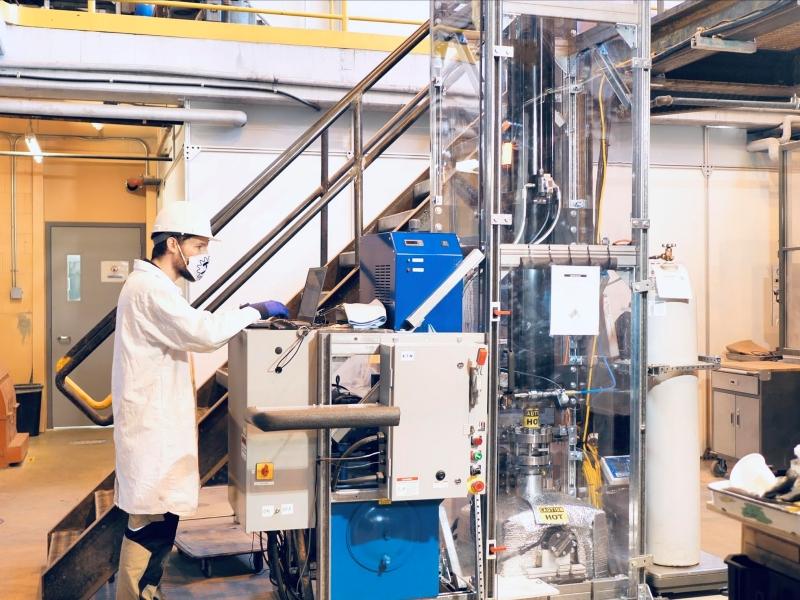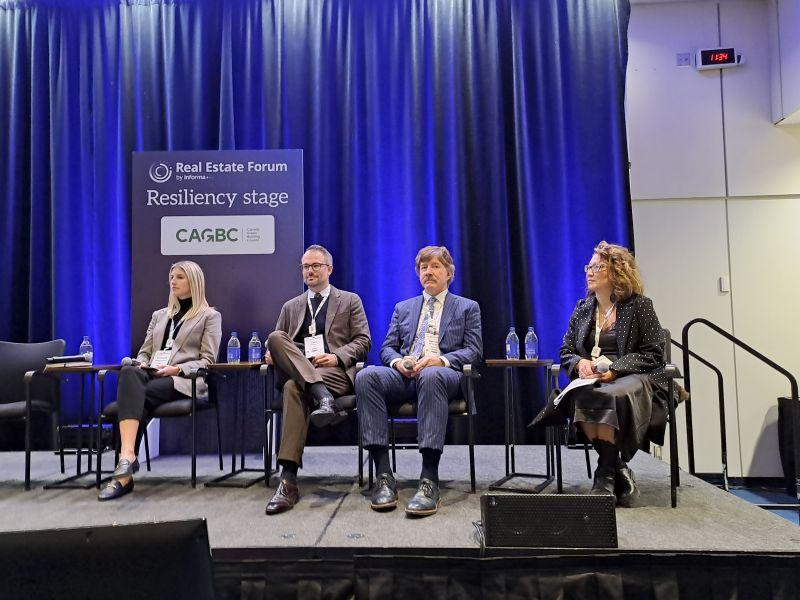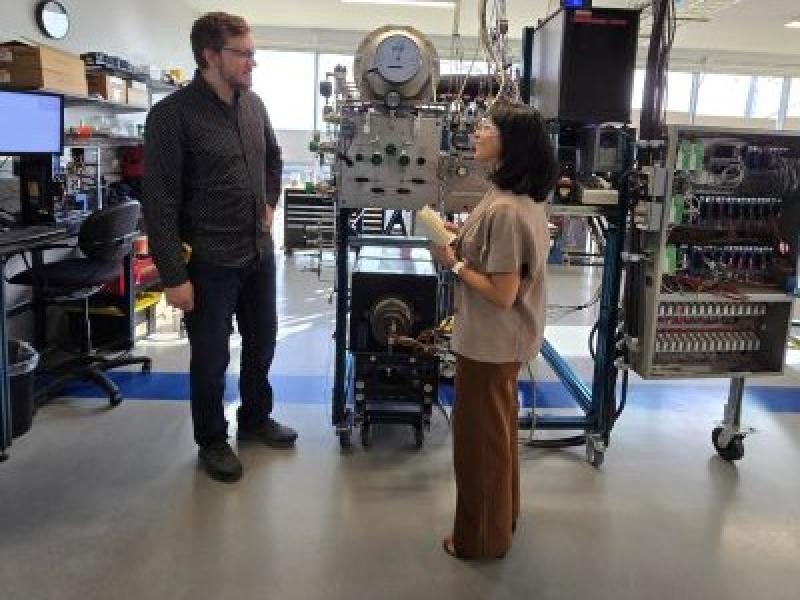
Urbanjacks, a two-year-old company from Vancouver, has created a way to divert a forest’s worth of wood from going to landfill in Canada each year by refashioning it into lumber.
Founded in 2023, Urbanjacks recycles wood fibre scraps sourced from landfills, construction sites and film and TV production to produce wood that can be used to make furniture and other non-structural products.
This eliminates waste and can offset tonnes of carbon emissions by preserving trees and ensuring wood does not decompose in landfills. Materials like discarded lumber are given a higher-value lease on life as a new product.
Finding a renewed purpose for the millions of tonnes of wood waste produced every year in Canada is not only good for the environment, it “makes business sense and it also makes dollars and cents,” Aaron Laslo, CEO and co-founder of Urbanjacks, told Sustainable Biz Canada in an interview.
Currently capable of processing up to 400 yards of wood fibre per week at its downtown Vancouver facility, Laslo aspires to grow his company across Canada and is seeking funding to make his dream a reality.
Urban lumberjacks
Laslo, who worked in sales for Finnish companies Nokia and Tieto, is part of the founding group of Urbanjacks made up of mostly ex-Nokia employees, who sought to bring European solutions for tackling waste to North America.
Unlike Europe, North America has “an abundance of not only trees and wood” and “an abundance of space.” This bounty is easily exploited by overconsuming wood products and disposing of them carelessly, which ignores potential circular economy solutions.
To research and develop circular solutions for a range of materials, Can-Do! Technologies was formed in 2021 by Laslo and co-founders Gene Ho and Matt Hermann to address these issues. Urbanjacks was founded as the wood manufacturing brand of Can-Do!, its name a play on “urban lumberjacks”.
Wood waste such as used dimensional boards are collected by Urbanjacks from disposal facilities and construction sites, and sent to the company’s Vancouver facility. There, the products are measured and metal parts such as screws, nails and fasteners are removed.
The “prime bits” of the lumber are selected, Laslo said, then processed, finger joined, glued and pressed into boards that can be as long as 20 feet. Up to 94 per cent of the wood it gathers can be reused by Urbanjacks, he explained.
Prototypes of Urbanjacks’ lumber have been stronger than comparable finger-joined and virgin lumber, Hermann said.
“The lumber can be used anywhere you use normal lumber,” Laslo said, listing such diverse examples as security concierge desks, bar tops, cabinets and outdoor furniture. It can even be turned into pellets to be used a fuel source.
Urbanjacks has supplied clients including museums, stage theatre companies, and film and television production firms such as Apple Studios with its wood.
While the Urbanjacks lumber is sold at a 10 to 15 per cent premium over its conventional counterparts, Hermann said it can also be produced below the cost of virgin lumber, depending on the grade.
Spreading Lumberjacks' roots
During the processing, every board is measured with sensors that calculate the diverted embodied carbon, and the data is passed on to the end user. The transparency helps address the problem of greenwashing, Laslo said.
On the Urbanjacks website, the company tracks the amount of wood it has diverted. Currently sitting at just over 124 cubic metres, it translates to saving 91.1 tonnes of carbon.
Structural applications such as buildings are not a target market for Urbanjacks today, Laslo said. But the company is investing toward the possibility by working with manufacturers and is planning to certify its lumber for structures.
For further growth, Laslo plans to expand Urbanjacks’ material handling capacity in North America and develop more manufacturing sites in Canada. Additionally, he is looking to license its technology and partner with other waste diversion companies.
Laslo is talking to investors to fuel Urbanjacks’ growth. During the interview, he spoke from Ontario, where he was meeting potential backers of a seed round targeting $1 million.
Further commercialization and research efforts from Can-Do! should be expected, including work on textiles - which are another leading source of waste.










